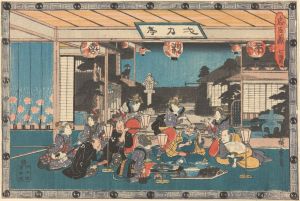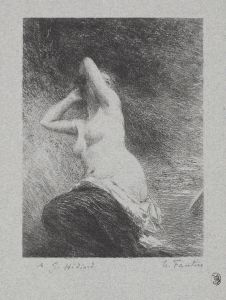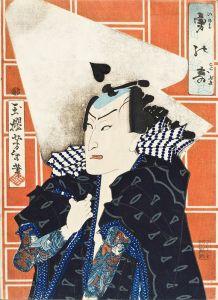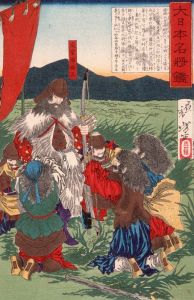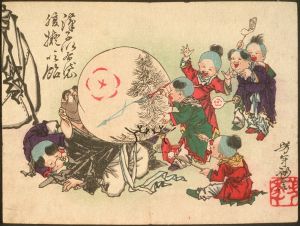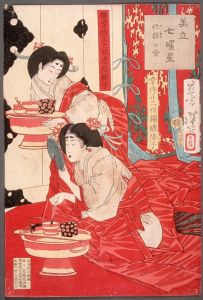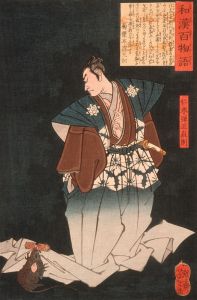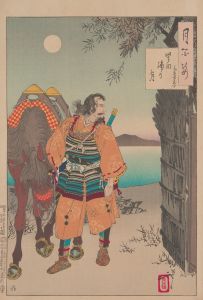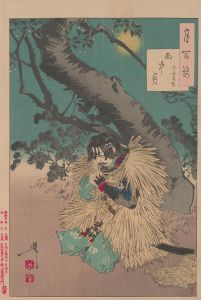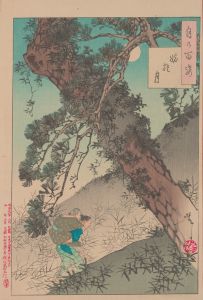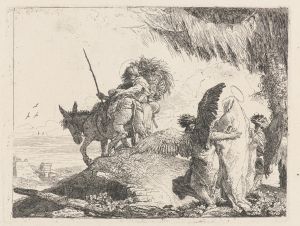
Bunbuku chagama
A hand-painted replica of Tsukioka Yoshitoshi’s masterpiece Bunbuku chagama, meticulously crafted by professional artists to capture the true essence of the original. Each piece is created with museum-quality canvas and rare mineral pigments, carefully painted by experienced artists with delicate brushstrokes and rich, layered colors to perfectly recreate the texture of the original artwork. Unlike machine-printed reproductions, this hand-painted version brings the painting to life, infused with the artist’s emotions and skill in every stroke. Whether for personal collection or home decoration, it instantly elevates the artistic atmosphere of any space.
Tsukioka Yoshitoshi was a renowned Japanese artist known for his work in the ukiyo-e genre, a style of woodblock prints and paintings that flourished in Japan from the 17th through 19th centuries. One of his notable works is "Bunbuku Chagama," which is based on a popular Japanese folktale. The tale of Bunbuku Chagama revolves around a magical teakettle that transforms into a tanuki, a creature often depicted as a raccoon dog in Japanese folklore, known for its shapeshifting abilities and playful nature.
Yoshitoshi's depiction of "Bunbuku Chagama" captures the whimsical and fantastical elements of the story. The folktale tells of a poor man who finds a rusty old teakettle and decides to clean it. To his surprise, the kettle transforms into a tanuki. The tanuki, grateful for being rescued, offers to help the man by performing tricks and dances. The man takes the tanuki to a local temple, where it performs for the monks and visitors, bringing prosperity to the man and the temple.
Yoshitoshi's work is celebrated for its dynamic composition and vivid portrayal of the characters. His ability to convey movement and emotion through the intricate details of the woodblock print is a testament to his skill and creativity. The print likely features the tanuki in mid-transformation or performing one of its entertaining acts, capturing the essence of the folktale's humor and magic.
Yoshitoshi was active during the late Edo and early Meiji periods, a time of significant social and political change in Japan. His work often reflects the tension between traditional Japanese culture and the rapid modernization occurring during the Meiji Restoration. Despite these changes, Yoshitoshi remained dedicated to the ukiyo-e style, contributing to its preservation and evolution.
"Bunbuku Chagama" is part of Yoshitoshi's broader body of work, which includes a series of prints that explore supernatural themes, historical events, and scenes from classical literature. His prints are characterized by their bold use of color, dramatic compositions, and innovative techniques, which have earned him a lasting legacy in the history of Japanese art.
Yoshitoshi's influence extends beyond his lifetime, as his work has been studied and admired by artists and scholars worldwide. His ability to blend traditional Japanese themes with contemporary artistic techniques has made his prints enduringly popular. "Bunbuku Chagama," like many of his works, continues to be appreciated for its artistic merit and its role in preserving Japanese folklore.
In summary, Tsukioka Yoshitoshi's "Bunbuku Chagama" is a captivating representation of a beloved Japanese folktale, showcasing the artist's mastery of the ukiyo-e style and his contribution to the cultural heritage of Japan. Through his work, Yoshitoshi not only entertained audiences but also provided a visual record of the rich tapestry of Japanese myths and legends.





